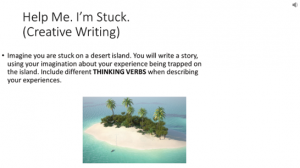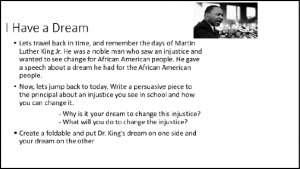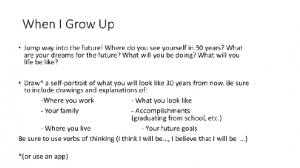Abstract
This paper1 examines some uses of Systemic Functional Linguistics (SFL) in teacher preparation and offers some ideas and activities for ESL classrooms. The paper begins with a rationale for the use of SFL in teacher training and language teaching, followed by a description of Hallidayan systemic functional linguistics (SFL) and its application to pedagogy, as represented by the work of Rose, Martin, Butt, Lock, and others. It examines certain aspects of grammar from an SFL perspective and provides an example of a project that was completed by teacher learners, including related activities for the classroom.
As an ESL teacher and teacher trainer, I have always been certain of the inadequacy of the traditional understanding of English grammar as a set of rules to be memorized and subsequently applied. So many rules seem woefully inadequate and riddled with exceptions. When considering where to do my doctoral work and what focus it should have, I found Macquarie University’s online doctoral program in linguistics, where I learned about systemic functional linguistics (SFL) and the perspectives it offers on grammar, including the work of Halliday, Hasan, Matthiessen, Martin, and others. I discovered that much of their work was applied to language education. So it was that in my personal context of seeking a better way to understand and teach grammar, I found a professional home in SFL, the study of which has led me to apply SFL to teacher training and teaching English as a new language.
The Argument
One of my most important goals is for my teacher learners, whether they are new to the classroom or already in the classroom and working towards their master’s degrees, to develop a deeper understanding and more expansive view of grammar since as language teachers they have to teach a great deal of English grammar. From their time in primary and secondary school, most of them remember a few rules for spelling and grammar (i before e except after c…) and some mostly fallacious prohibitions (never start a sentence with and or because…). They may also recall the definitions of the parts of speech, whose categorizations may be problematic. For instance, I observed a wonderfully gifted student teacher deliver a third-grade ESL lesson on nouns as person, place, or thing. During the lesson, she presented the word house and asked the students whether it was a person, place, or thing. The answers were divided between place and thing. These responses caused her to question her own ideas about the categorization of house as place. Another example of the limits of categorization is the traditional division of verbs into two categories: action verbs and being verbs. This oversimplified labeling raises the question of how to categorize verbs such as say, think, want, and believe. I am convinced that SFL provides better ways of understanding and teaching English (and other languages).
Description of SFL
SFL is a rich and expansive theory of language that allows teacher educators to go beyond the narrow bounds of traditional grammar instruction focused on syntax and rules to a broader, more holistic concept of language and language pedagogy that involves an understanding of the meaning-making resources of language and the interface between discourse semantics, lexico-grammar (the continuum between vocabulary and grammar), and phonology. It is a linguistic theory that models language as a social activity in which all participate. Systemic means that grammar is viewed as consisting of system networks that contain the patterns of choices through which people make meaning (Halliday & Matthiessen, 2014). Polarity is an example of a system: He is sick. He is not sick. Functional means that the practical uses of language in context are the focal point of the model, not rule-based or formal grammar.
There is a significant amount of research into and application of SFL in literacy pedagogy in Australia through the work of Halliday, Hasan, Martin, Rose, Rothery, Christie, Feez, Coffin, Butt, Mahboob, and others. In the US, Meg Gebhard, Mary Schleppegrell, Cecelia Colombi, Heidi Byrnes, Luciana de Oliveira and others have been promoting the use of SFL in teacher training and in ESL and foreign language classrooms.
In SFL, instead of viewing a clause as a two-dimensional line, one can view it from a trinocular perspective that involves the three metafunctions explained by Halliday and Matthiessen (2014). For example, consider this independent clause, written by one of my bilingual teacher learners, I began to study Spanish for proficiency. It can be seen in light of the three metafunctions (see Table 1): ideational [experiential and logical] (language as experience: how speakers and writers represent the world), interpersonal (how speakers and writers interact or take a position) and textual (how speakers and writers organize their message; Butt et al., 2012).
Table 1
SFL Analysis of a Clause
|
I |
began to study |
Spanish |
for proficiency |
||
|
Constituency |
Noun group |
Verb group |
Noun group |
Prepositional phrase |
|
|
Experiential |
Senser |
Process: Mental: cognition |
Phenomenon |
Circumstance: Cause: purpose |
|
|
Interpersonal Declarative |
Subject |
Modulation: Time Finite+past |
Predicator |
Complement |
Adjunct |
|
MOOD |
Residue |
||||
|
Textual |
Theme |
Rheme |
|||
Taxis: independent clause
In this analysis, the first line (constituency) includes the parts of a clause, with which most teachers would be familiar, and the interpersonal section would be partly familiar as subject and predicate. But the experiential and textual sections would be a new way of looking at the clause for most teachers, as would the metalanguage associated with them. That is not to suggest that ESL teachers should have their students do this delicate analysis, but that teachers could gain an enhanced awareness that a clause is more than parts of speech grouped together to form a subject and predicate and that grammar is a resource for making a wide range of meanings. This awareness can filter down to the classroom and various age- and proficiency-level applications and to pedagogy about writing genres common in schooling and their associated lexico-grammatical features.
Application of SFL
In addition to an explication of word classes and Common Core milestones (language progressive skills that meet US state requirements), the focus of my instruction is to explore some key concepts of SFL, such as the three metafunctions (ideational, interpersonal, textual), process types (semantic categories of verbs), modality (use of modal verbs and modal adverbs), cohesion (types of conjunction and other cohesive structures), and rank scale (independent or dependent clauses, embedded that/who/which clauses, and so on).
Since verbs form a large part of ESL instruction, one of the projects my teacher learners complete is on verbs (see Table 2).
Table 2
SFL Group Project
|
Parts |
Assignment |
Product |
|
Part 1 |
Thoroughly describe your process type in a Word doc based on information from the Lock textbook. Provide examples and details (700 words minimum) |
Hand in a brief paper on the process type that your group was assigned. The paper should describe the process type and provide some basic examples of verbs of that type. |
|
Part 2 |
Choose two verbs of your process type, one regular and one irregular, for a special focus on tense. Conjugate each verb in all primary and secondary tenses. |
Two tables or other type of format for the conjugation of the two verbs in all primary and secondary tenses. |
|
Part 3 |
Create ways to present this process to high beginning/low intermediate middle school ESL students. You may create posters and other visual materials. You may also create a webpage or other computer-based presentation (Prezi …). Include plentiful examples of verbs that belong to this process type. |
PPT, poster, Glogster, Prezi or other type of presentation of the process type |
|
Part 4 |
Create 3 activities for students to practice the verb process type in the two tenses you have been assigned. Only use verbs of your assigned process type. |
Write a description of all three activities to share with the class. You may show the descriptions of the activities on PPT, or you may explain them orally and give your classmates a handout with them. |
For the project, each group of teacher learners is assigned a process type (as classified by SFL): material process (verbs of doing, e.g. jumping), mental process (verbs expressing the inner world: thinking, inclination, emotion, and perception), relational process (verbs of being and having), behavioral process (verbs of physiological behavior, e.g. yawning), existential process (verbs of existing, e.g. exist/there is), and verbal process (verbs of saying).
For instance, one group of teacher learners completed their project on verbs of thinking. They researched this category of verbs and wrote an explication of it. They chose four verbs, two regular (dream, believe) and two irregular (think, know) to illustrate the type and created three activities (see Figures 1, 2, and 3).
Figure 1: Activity 1 “Help Me. I’m Stuck.”

Figure 2: Activity 2 “I Have a Dream” with Sample Foldable


Figure 3: Activity 3

In fine-tuning instruction of verbs by semantic category through the SFL perspective, teachers can help their ESL students better navigate the verbs they have to learn and focus their attention on how these categories of verbs are used. Thus, for example, verbs of the mental process type are not usually used in the continuous form. Also, they often project a that clause (I think that…). Additionally, teachers can show students how these categories of verbs (process types) occur in school writing, such as recounts of experience (see Appendix A).
Conclusion
SFL can offer teachers a deeper insight into English grammar, not just the topics explored above, but also such topics as nominalization (nouns formed from verbs, a feature of advanced language), lexical cohesion (the ways lexicon is used to achieve cohesion in writing or speaking), and modality and its role in communicative competence. There is much more about SFL that I cannot include here, but teacher educators can explore SFL through the resources listed below.
References
Butt, D., Fahey, R., Feez, S, & Spinks, S. (2012). Using Functional Grammar: An explorer’s guide, (3rd ed.). South Yarra, Vic., Australia: Palgrave.
Christie, F. (20120. Language education throughout the school years. Chichester, UK: Wiley-Blackwell.
Halliday, M. A. K., & Matthiesen, C. M. I. M. (2014). Introduction to functional grammar (4th ed.). London: Routledge.
Halliday, M. A. K., & Hasan, R. (1976). Cohesion in English. London: Longman Group Ltd.
Hasan, R. (2011). Language and education: Learning and teaching in society. London: Equinox.
Lock, G. (1996). Functional English grammar: An introduction for second language teachers. Cambridge, UK: Cambridge University Press.
Martin, J., & Rose, D. (2009). Genre relations: Mapping culture. London: Equinox.
Rose, D., & Martin, J. (2012). Learning to write, reading to learn. Sheffield, UK: Equinox.
Appendix A
Recount: My Most Embarrassing Moment (Kinesthetic Activity)
Instructions: 1. Stand up. 2. When you hear a verb of being (Relational Process), sway from left to right. 3. When you hear a verb of doing (Material Process), take a step forward. 4. When you hear a verb of thinking or feeling (Mental Process), take a step backwards.
My Most Embarrassing Moment
By Jackie Nenchin
It was a clear and sunny autumn day. The prison grounds at FCI Fairton, a high medium security prison for men, were beautiful and vivid with multicolored leaves everywhere. It was after nine in the morning, time for class to begin. My students were ready outside our classrooms, which were next to the library.
As I did every day, I passed through the security checkpoints. I walked across the courtyard with my escort, one of the other teachers. I entered the education building and turned right toward the classrooms. I saw all of my students lined up along the wall. I smiled at them, and they smiled back. Everything was going just as expected, when suddenly I felt something silky and swishy around my ankles. My slip had fallen down around my ankles in full view of all my students. I rushed into the nearby office where I always left my handbag and took the slip off. Then I went out to teach my class.
I felt so embarrassed. I was afraid to look at my students. I didn’t want to see them looking at me. Somehow I was able to stay calm throughout the lessons, but I will never forget my most embarrassing moment.
Debriefing
- What is the main process type at the beginning?
- What is the main process type in the middle?
- What is the main process type at the end?
- Can you match the parts of a recount [orientation, complication, resolution, and coda (evaluation)] to the text?
Footnotes
1. Based on a presentation given at TESOL 2016.

One thought on “Beyond tradition: Using systemic functional linguistics in ESL teaching and teacher preparation”